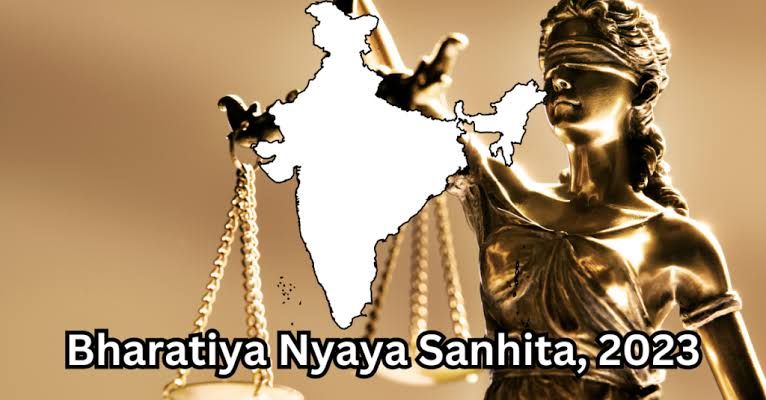TOPIC:- JUVENILE JUSTICE: BALANCING REHABILITATION AND PUNISHMENT
AUTHOR: VARTIKA YADAV, a Student A Student at INDORE INSTITUTE OF LAW
Abstract:-
This legal article delves into the intricate balance between rehabilitating juvenile offenders and imposing appropriate punishment within the realm of juvenile justice. It examines the challenges in reconciling these two objectives and the legal principles guiding such endeavors. Drawing from the wisdom of eminent jurists, both international and Indian, this article explores the perspectives of legal luminaries such as Justice Earl Warren, Justice William J. Brennan, Justice Benjamin N. Cardozo, and Justice Oliver Wendell Holmes Jr.
In the Indian context, luminaries like Justice P.N. Bhagwati have emphasized the importance of treating juvenile offenders with a rehabilitative lens, aligning with the ethos of a compassionate and reformative justice system. Justice V.R. Krishna Iyer’s pronouncements of young offenders also cast a significant influence on the discourse. Additionally, this exploration incorporates insights from Indian legal scholars such as Upendra Baxi and Leila Seth, who have contributed to shaping the narrative surrounding juvenile justice in the country.
By synthesizing the perspectives of both international and Indian jurists, this article aims to offer a holistic understanding of the nuanced considerations essential for achieving a balanced and culturally sensitive juvenile justice system.
INTRODUCTION:-
In the complex realm of juvenile justice, the imperative of balancing rehabilitation and punishment for young offenders is paramount. This exploration goes beyond the surface, seeking to unravel not only the intricacies of legal processes, psychological considerations, and societal impact but also addressing the fundamental question: Why is it crucial to strike a delicate balance? The answer lies in the profound commitment to shaping the trajectory of our youth within the justice system, ensuring both accountability and the opportunity for positive transformation.
HISTORICAL EVOLUTION:-
Juvenile justice didn’t always look the way it does today. Back in the day, the focus was more on being a guiding figure than a punisher. Early on, the system believed in giving troubled kids a chance to reform rather than just punishing them. Over time, especially in the 20th century, things started to change. People began to realize that young folks, even if they messed up, deserve a fair shot at rehabilitation. Landmark cases, like Kent v. United States, played a big role in making sure that young people have their rights considered. So, the history shows a shift from a more parent-like approach to one that values fairness and second chances.
A COMPARISON BETWEEN REHABILITATION AND PUNISHMENT:-
The evolution of juvenile laws has witnessed a profound transformation, marked by a shifting emphasis from punitive measures towards a more balanced consideration of rehabilitation. This exploration navigates through the changing landscape of juvenile justice, comparing the historical punitive approaches with contemporary rehabilitation-oriented frameworks.
Early Punitive Approaches:
In the early stages, juvenile justice leaned heavily on punitive measures, viewing wayward youth through a lens of discipline rather than understanding. The focus was on maintaining order and imparting a sense of consequences, often overlooking the rehabilitative needs of young offenders.
Shift towards rehabilitation:
Over time, societal attitudes shifted, recognizing the potential for positive change in young individuals. The system began emphasizing rehabilitation, acknowledging that many juvenile offenders can be redirected onto a positive path through appropriate interventions. This shift is rooted in a belief in the malleability of youth and their capacity for reform.
Landmark Legal developments:
In the Indian context, pivotal legal cases have contributed to reshaping the landscape of juvenile justice, drawing attention to the due process rights of young offenders and recognizing their unique characteristics.
An Indian equivalent to the principles underscored in In re Gault can be seen in the case of M.C. Mehta v. State of Tamil Nadu. This case emphasized the importance of treating juveniles with due process, affirming that fundamental rights apply to them just as much as to adults. The judiciary recognized that juveniles are not just subjects of punishment but individuals with rights deserving protection.
Recognition of Distinct needs:
The Indian legal system, influenced by global shifts, has acknowledged the distinct needs and capacities of juveniles. Cases like Gaurav Jain v. Union of India have highlighted the importance of considering the age and mental maturity of juvenile offenders during legal proceedings, recognizing their unique vulnerabilities and potential for rehabilitation.
Reflection in Indian Juvenile Justice Act:
The J.J Act, 2015 corresponds to the transformative impact observed in Roper v. Simmons. This legislative development reflects an acknowledgment that juveniles are not to be treated as miniature adults in the eyes of the law. The act emphasizes rehabilitation and reintegration, aligning with global recognition of juveniles’ potential for positive transformation.
The modern juvenile justice system seeks a delicate balance between rehabilitation and punishment. While accountability is still essential, there is a growing awareness that rehabilitation can break the cycle of reoffending. The system now aims to tailor interventions to individual needs, recognizing that a one-size-fits-all approach is inadequate.
Jurists’ and Scholars’ Perspectives on balancing rehabilitation and punishment for Juveniles:
- Justice P.N. Bhagwati: Justice P.N. Bhagwati advocated for a progressive and rehabilitative approach. He believed in prioritizing the best interests of the child, emphasizing that the juvenile justice system should focus on reforming young offenders rather than punitive measures.
- Justice V.R. Krishna Iyer: He stressed the need for humane treatment, emphasizing rehabilitation over retribution for juveniles. He believed in a system that considers the unique circumstances of young offenders and provides opportunities for their reformation.
- Leila Seth (Former Chief Justice of Himachal Pradesh): She argued for a holistic approach, recognizing the importance of rehabilitation while acknowledging the need for accountability. She emphasized the role of education, counseling, and community support in the rehabilitation process.
- Upendra Baxi (Legal Scholar): He contributed to the discourse by highlighting the importance of procedural fairness in juvenile proceedings.
- Justice Benjamin N. Cardozo (Global Perspective): His emphasis on considering the individual’s capacity for reform and the aim of preventing future offenses resonates in the global discourse on juvenile justice, advocating for a balanced approach.
These jurists and scholars collectively endorse the idea that juvenile justice should strike a delicate balance between rehabilitation and punishment. They argue for a system that considers the developmental stage of young offenders, prioritizes their welfare, and aims for their reintegration into society. The consensus is on viewing juveniles not merely as wrongdoers but as individuals capable of positive transformation with the right interventions.
A notable landmark judgment in India that exemplifies the delicate balance between rehabilitation and punishment in juvenile justice is the case of “Muzzafarpur Shelter Home Case” (2018)
In this case, horrific instances of abuse were reported at a shelter home in Muzzafarpur, Bihar, where minor girls were subjected to sexual exploitation and violence. The accused included both staff members and outsiders. The judgment, delivered by the Supreme Court of India, showcased a nuanced approach balancing the need for rehabilitation and accountability.
One such case is the Nirbhaya Case (2012), where a juvenile was involved in the heinous gang rape and murder of a young woman in Delhi. The juvenile involved in the Nirbhaya Case was tried separately and, in accordance with the Juvenile Justice Act, received a maximum sentence of three years in a reformative home.
The Supreme Court’s observation and subsequent public discourse sparked a debate on the adequacy of the juvenile justice system in handling heinous crimes committed by juveniles. The incident led to amendments in the juvenile justice act in 2015, allowing for the trial of juveniles aged 16-18 as adults in case of heinous offenses. This change was met with debates on the balance between rehabilitation and punishment.
While the case highlighted the challenges in finding the right balance, the response, including legislative changes, showed a shift towards acknowledging the gravity of certain offenses and the need for accountability, even within the juvenile justice framework. The Supreme Court’s observation and subsequent legal developments reflected an ongoing dialogue on the nuanced intersection of rehabilitation and punishment in cases of heinous crimes committed by juveniles.
- Pratap Singh v. State of Jharkhand (2005): Emphasized the need for individualized justice in juvenile cases, recognizing the distinct circumstances and potential for rehabilitation. The court highlighted the importance of reformative measures over punitive ones.
- Makhan Singh v. State of Punjab (2009): The court underscored the rehabilitative goals of the juvenile justice system in India, emphasizing the need to consider the age and reformative potential of the juvenile offender.
- Golam v. State of Haryana (2014): Addressed the issue of bail for juvenile offenders, highlighting the importance of considering the rehabilitative aspects of the juvenile justice system while balancing concerns of public safety.
The judiciary’s approach in determining the balance between rehabilitation and punishment for juvenile offenders is guided by several key principles. In the context of India, these principles align with the philosophy of the Juvenile Justice (Care and Protection of Children) Act, 2015.
Here are some aspects of the judiciary’s approach:
- Individualized Justice:
The judiciary emphasizes individualized justice, recognizing that each juvenile offender is unique with distinct circumstances and backgrounds. Courts consider factors such as age, mental and physical health, socio-economic background, and the nature of the offense to tailor interventions that suit the specific needs of the juvenile.
- Rehabilitative Focus:
The rehabilitative aspect takes precedence over punitive measures, aligning with the philosophy that juvenile offenders have the potential for reform. The goal is to facilitate the reintegration of the juvenile into society as a law-abiding citizen.
- Best Interests of the Child:
Courts assess whether the chosen intervention, be it rehabilitation or a limited punitive measure, aligns with the overall well-being and future prospects of the juvenile offender.
- Procedural Fairness and Due Process:
Court ensure that the juvenile has adequate legal representation, understands the charges, and is afforded the right to be heard. This ensures that any decision regarding rehabilitation or punishment is made through a fair and just process.
- Public Safety Considerations:
In cases where the offense is severe or poses a risk to society, the court may impose measures that balance rehabilitation with the need to protect the community.
- Legislative Compliance:
The judiciary adheres to the legal framework outlined in the Juvenile Justice Act and other relevant laws. Decisions are made in compliance with statutory provisions, ensuring that the rehabilitative and punitive measures are in line with the legislative intent.
CONCLUSION:
The imperative for a delicate balance between rehabilitation and punishment in juvenile justice is rooted in the recognition that young offenders, despite their transgressions, possess the potential for positive transformation. Striking this equilibrium is not only a legal mandate but a societal commitment to fostering redemption while ensuring accountability. This balance acknowledges the developmental nuances of youth, embraces the ethos of reformative justice, and represents a collective belief in sculpting resilient futures rather than perpetuating cycles of punitive measures. The judiciary’s approach involves a thoughtful and nuanced consideration of the individual circumstances, prioritizing rehabilitation, and ensuring procedural fairness while also weighing public safety concerns and complying with the legal framework governing juvenile justice. By integrating rehabilitative measures with just punishment, the legal system can contribute to the holistic development and reintegration of juveniles into society.
NAME: VARTIKA YADAV
LLB 2nd SEM
INDORE INSTITUTE OF LAW




